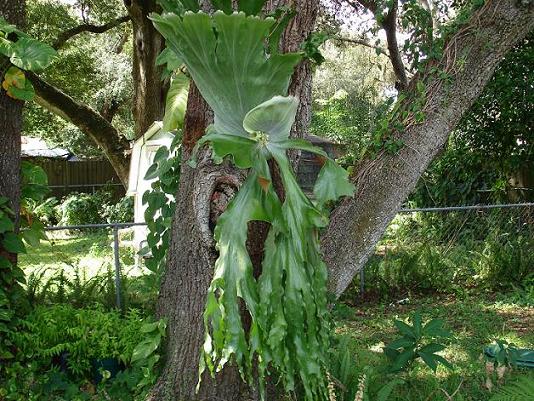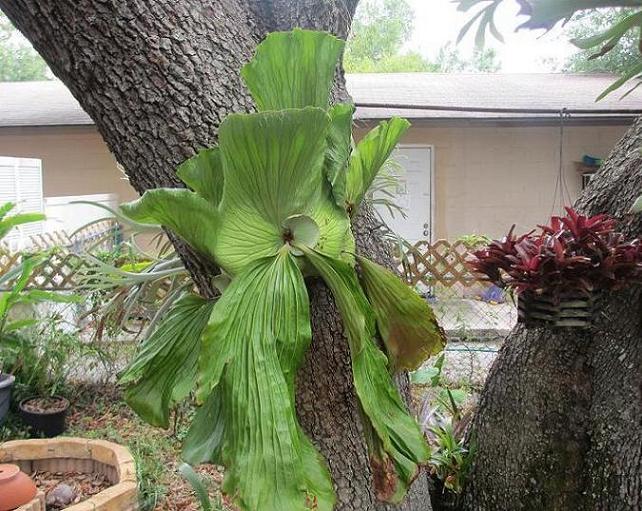Staghorn ferns
The coolest ferns
I’ll never forget the first time I saw staghorn ferns. I was around ten years old. There were many different species in the same botanical garden. I had no idea what they were, but I was in awe of their strangeness, as well as their beauty. I remember thinking how cool it would be to have such amazing plants growing on trees in my own yard. Now I do have them on my trees… many different species.
There are many people who only grow plants for their flowers, and others who only grow plants for the food they produce, but those people are missing an enormous aspect of what makes nature such a beautiful and wondrous place. There are many plants that, just by their very form in which they exist, enrich our lives and contribute such beauty to the world. To deny yourself that, is for me, no different that denying yourself music. Fill you life with beauty.
All staghorn ferns are epiphytic; they anchor themselves by growing their roots onto the surface of trees, or sometimes rocks. The all grow two types of fronds. The first type; sterile fronds, do not produce spores. The sterile fronds are flat discs that wrap themselves backward, toward the roots of the plant and press themselves against the tree. They leave a gap between the frond and the tree at the top, forming a pouch with the tree bark on one side, the frond on the other, and the roots sandwiched between them. This gap serves to collect falling debris from the tree and feces from birds, which decomposes in the pouch created by the sterile frond.
In other words staghorn ferns create their own soil, which provides nutrients, as well as holding moisture at the roots. Some species have flat semicircular sterile fronds, some have fingerlike projections off of their top edge, and others have deeply veined surfaces. They can be smaller than a tea-saucer, or larger than a Roman sheild.
The second type of frond is the fertile frond. As with the sterile fronds, there is a tremendous amount of variation in the size and form of the fertile fronds from one species to the next. In most species these fronds are more or less antler-like in appearance. Some hovever aren’t, such as those of P. elephantotis, which are large, deeply veined, and rounded. Large spore patches form on the underside of these fronds. Some species have special appendages off of the fertile frond, specifically for spore patches, but most form the spore patches on the underside of the tips of the antlers. Fertile fronds can range from several inches long, to ten feet long.
note:I have grouped these plants according to their phylogenetic relationships, rather than their geographical distribution.
Malaysian/Asian clade
This clade contains the showiest and the largest species. The four giants: grande, holttumii, superbum, and wandae, are downright GARGANTUAN! They are also, hands down, my favorite staghorn ferns.
Javan/Australian clade
In general, the members of this clade are not the show-stoppers that the Malaysian/Asian clade are, but they are beautiful and very easy to grow. Both P. bifurcatum, and P. veitchii are particularly good species for the beginner. P. bifurcatum can be found in almost any nursery, and is frequently inexpensive.
Afro-American clade
This clade is the odd uncle of the family. It contains the only New World species: P. andinum.
P. Stemaria, and P. elephantotis, are only found on the African continent. P. elisii, P. madagascariense, and P. quadridichotimum are endemic to the island of Madagascar, and P. alcicorne is found in both Madagascar and Africa.
Kreier and Schnneider, American Journal of Botany. 2006;93:217-225




